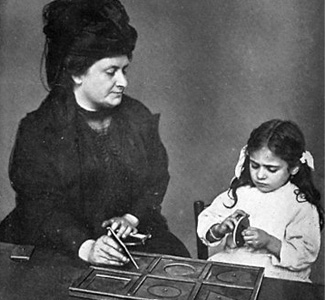Education for life

Montessori History
The Montessori educational method began with Maria Montessori, the remarkable physician, anthropologist, and psychologist who was born in Italy in 1870.
Throughout her life, Dr. Montessori achieved international renown as the first woman to practice medicine in Italy, as a three-time nominee for the Nobel Peace Prize, and for the revolutionary educational method she developed and helped spread throughout the world.
Dr. Montessori did not set out to develop a pedagogy or to found a movement. After medical school, she worked with abandoned children in a psychiatric clinic in Rome. As a trained scientist she took an observational approach to determine how best to serve these "unteachable" children. Dr. Montessori discovered that the students had the ability to teach themselves when they were given the appropriate materials and freedom of exploration in the proper environment. Her success motivated her to leave medical practice and dedicate her life's work to education.
Compelled by her initial findings, Dr. Montessori made a speech to the Italian Educational Congress in 1896. She was then appointed director of a school for the “mentally retarded” to further develop and test her theories. Her students were given the Italian state exams, and scored higher than average — a stunning achievement from yet another group of “unteachable" subjects. In 1907, Dr. Montessori founded her first school, the Casa dei Bambini (Children’s House), and thus the Montessori method of education was born.
Throughout the rest of her life, Dr. Montessori continued to develop her educational ideals and methods for children in the elementary and adolescent years. She traveled the world to give lectures, open schools, and train guides. Dr. Montessori studied children of all races and cultures, and constructed her method around the universality of human development. Central to her philosophy was the belief that all children have an innate desire to learn and that given the appropriate environments, one must simply “follow the child.” She was profoundly convinced that the path to world peace was through the education of young people.
Maria Montessori died in 1952. However, for more than 100 years, the Montessori method has educated millions of students throughout the world. It is estimated that there more than 5,000 Montessori schools in the United States and more than 20,000 in 110 countries around the world.

